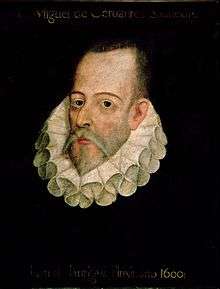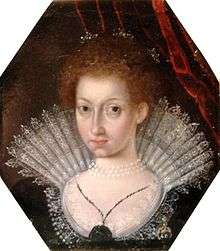1616
| Millennium: | 2nd millennium |
|---|---|
| Centuries: | 16th century · 17th century · 18th century |
| Decades: | 1580s · 1590s · 1600s · 1610s · 1620s · 1630s · 1640s |
| Years: | 1613 · 1614 · 1615 · 1616 · 1617 · 1618 · 1619 |
| 1616 by topic: | |
| Arts and Science | |
| Architecture - Art - Literature - Music - Science | |
| Lists of leaders | |
| Colonial governors - State leaders | |
| Birth and death categories | |
| Births - Deaths | |
| Establishments and disestablishments categories | |
| Establishments - Disestablishments | |
| Works category | |
| Works | |
| Gregorian calendar | 1616 MDCXVI |
| Ab urbe condita | 2369 |
| Armenian calendar | 1065 ԹՎ ՌԿԵ |
| Assyrian calendar | 6366 |
| Bengali calendar | 1023 |
| Berber calendar | 2566 |
| English Regnal year | 13 Ja. 1 – 14 Ja. 1 |
| Buddhist calendar | 2160 |
| Burmese calendar | 978 |
| Byzantine calendar | 7124–7125 |
| Chinese calendar | 乙卯年 (Wood Rabbit) 4312 or 4252 — to — 丙辰年 (Fire Dragon) 4313 or 4253 |
| Coptic calendar | 1332–1333 |
| Discordian calendar | 2782 |
| Ethiopian calendar | 1608–1609 |
| Hebrew calendar | 5376–5377 |
| Hindu calendars | |
| - Vikram Samvat | 1672–1673 |
| - Shaka Samvat | 1537–1538 |
| - Kali Yuga | 4716–4717 |
| Holocene calendar | 11616 |
| Igbo calendar | 616–617 |
| Iranian calendar | 994–995 |
| Islamic calendar | 1024–1025 |
| Japanese calendar | Genna 2 (元和2年) |
| Javanese calendar | 1536–1537 |
| Julian calendar | Gregorian minus 10 days |
| Korean calendar | 3949 |
| Minguo calendar | 296 before ROC 民前296年 |
| Nanakshahi calendar | 148 |
| Thai solar calendar | 2158–2159 |
| Wikimedia Commons has media related to 1616. |
1616 (MDCXVI) was a leap year starting on Friday (dominical letter CB) of the Gregorian calendar and a leap year starting on Monday (dominical letter GF) of the Julian calendar, the 1616th year of the Common Era (CE) and Anno Domini (AD) designations, the 616th year of the 2nd millennium, the 16th year of the 17th century, and the 7th year of the 1610s decade. As of the start of 1616, the Gregorian calendar was 10 days ahead of the Julian calendar, which remained in localized use until 1918.
Events
January–June
- January
- 6-year-old António Vieira arrives from Portugal, with his parents, in Bahia (present-day Salvador) in Colonial Brazil where he will become a diplomat, noted author, leading figure of the Church, and protector of Brazilian indigenous peoples in an age of intolerance.
- Officials in Württemberg charge astronomer Johannes Kepler with practicing "forbidden arts" (witchcraft). His mother had also been so charged and spent 14 months in prison.
- January 1 – King James I of England attends the masque The Golden Age Restored, a satire by Ben Jonson on fallen court favorite the Earl of Somerset. The king asks for a repeat performance on January 6.
- January 3 – In the court of James I of England, the king's favorite George Villiers becomes Master of the Horse (encouraging development of the thoroughbred horse); on April 24 he receives the Order of the Garter; and on August 27 is created Viscount Villiers and Baron Waddon, receiving a grant of land valued at £80,000. In 1617, he will be made Earl of Buckingham. After the Earl of Pembroke, he is the 2nd richest nobleman in England.
- January 10 – English diplomat Sir Thomas Roe presents his credentials to the Mughal Emperor Jahangir, in Ajmer Fort, opening the door to the British presence in India.[1][2] Roe sailed in the Lyon under the command of captain Christopher Newport, best known for his role in the Virginia colonies.
- January 12 – The city of Belém, Brazil is founded on the Amazon River delta by the Portuguese captain Francisco Caldeira Castelo Branco, who had previously taken the city of São Luís in Maranhão from the French.
- January 15 – After overwintering with the Huron Indians, Samuel de Champlain and Recollect Father Joseph Le Caron visit the Petun and Ottawa Indians of the Great Lakes. This is Champlain's last trip in North America before returning to France. Having secured Canada, he helps create French America, New France, or L'Acadie.
- January 29 – Dutch captain Willem Schouten in the Eendracht rounds the southern tip of South America and names it Kaap Hoorn, after his birthplace in Holland.
- February – English merchants of the East India Company complain that the great troubles and wars in Japan since their arrival have put them to much pains and charges. Two great cities, Osaka and Sakaii, have been burned to the ground, each one almost as big as London, and not one house left standing, and it is reported above 300,000 men have lost their lives, “yet the old Emperor Ogusho Same hath prevailed and Fidaia Same either been slain or fled secretly away, that no news is to be heard of him.” Jesuits, priests, and friars are banished by the emperor and their churches and monasteries pulled down; they put the fault on the arrival of the English; it is said if Fidaia Same had prevailed against the emperor, he promised them entrance again, when without doubt all the English would have been driven out of Japan.[3]
- February 1 – James I of England grants Ben Jonson an annual pension of 100 marks, making him de facto poet laureate.[4]
- February 19 – First recorded eruption of Mayon Volcano, the Philippines' most active volcano.[5]
- February 24 – A commission of Roman Catholic theologians, the "Qualifiers," reports that the idea that the Sun is stationary is "foolish and absurd in philosophy, and formally heretical since it explicitly contradicts in many places the sense of Holy Scripture...".
- February 28 – In the aftermath of the 1613–1614 anti-Jewish pogrom called the Fettmilch Uprising in Frankfurt, Germany, mob leader Vincenz Fettmilch is beheaded, but the Jews, who had been expelled from the city on August 23, 1614, following the plundering of the Judengasse, can only return as a result of direct intervention by Holy Roman Emperor Matthias. After long negotiations, the Jews are left without any compensation for their plundered belongings.
- March – Action of 1616, La Goulette, Tunisia: A Spanish squadron under Francisco de Ribera defeats a Tunisian fleet.
- March 5 – Nicolaus Copernicus' De revolutionibus orbium coelestium (1543) is placed on the Index of Forbidden Books by the Congregation of the Index of the Roman Catholic Church "until corrected".
- March 11
- Galileo Galilei meets Pope Paul V in person, to discuss his position as a defender of Copernicus' heliocentrism.
- The English Roman Catholic priest, Thomas Atkinson is hanged, drawn, and quartered at York, at age 70 (he will be beatified by Pope John Paul II on November 22, 1987).
- March 19
- Sir Walter Ralegh, English explorer of the New World, is released from prison in the Tower of London, where he has been imprisoned for treason, in order to conduct a second (ill-fated) expedition in search of El Dorado in South America.[6]
- The Scornful Lady, a comedy stage play written by Francis Beaumont and John Fletcher, is published.
- March 26–August 30 – English explorer William Baffin, as pilot to Robert Bylot on the Discovery, makes a detailed exploration of Baffin Bay whilst searching for the Northwest Passage.[7] The expedition also discovers Smith Sound, Lancaster Sound and Devon Island, and reaches latitude 77° 45' North, a record which holds for 236 years.
- April 22 – Spanish writer Miguel de Cervantes Saavedra dies.
- April 23 – English playwright and poet William Shakespeare dies.[8]
- April 25 – Sir John Coke, in the Court of King's Bench (England), holds the King's actions in a case of In commendam to be illegal.
- May 25 – King James I of England's former favourite the Earl of Somerset and his wife Frances are convicted of the murder of Thomas Overbury in 1613. They are spared death and are sentenced to imprisonment in the Tower of London (until 1622).[9] Although the King has ordered the investigation of the poet's murder and allowed his former court favorite to be arrested and tried, his court, now under the influence of the George Villiers, gains the reputation of being corrupt and vile. The sale of peerages (beginning in July)[10] and the royal visit of James's brother-in-law, Christian IV of Denmark, a notorious drunkard, add further scandal.
- May 3 – The Treaty of Loudun is signed, ending a series of rebellions in France.
- June 12 – Pocahontas (now Rebecca) arrives in England, with her husband, John Rolfe, their infant son, Thomas Rolfe, her half-sister Matachanna (alias Cleopatra) and brother-in-law "Tomocomo", the shaman also known as Uttamatomakkin (having set out in May). Ten Powhatan Indians are brought by Sir Thomas Dale, the colonial governor, at the request of the Virginia Company, as a fund-raising device. Dale, having been recalled under criticism, writes A True Relation of the State of Virginia, Left by Sir Thomas Dale, Knight, in May last, 1616 in a successful effort to redeem his leadership. Neither Pocahontas or Dale see Virginia again.
July–December
- July 6 – First recorded eruption of Manam Volcano (erupting frequently since), forming a 10-km-wide island in the Bismarck Sea, 13 km off coast of Papua New Guinea, in the southwestern part of the Pacific Ring of Fire.[5]
- July 20 – Hugh O'Neill, 2nd Earl of Tyrone, dies in Rome, thus concluding the Flight of the Earls from Ireland.
- August 8 – The Tokugawa shogunate (Bakufu) in Japan forbids foreigners other than Chinese from traveling freely or trading outside of the ports of Nagasaki and Hirado.[11]
- September – Sakazaki Naomori of Iwami Tsuwano han fails to kidnap Princess Sen and commits suicide.
- September 15 – The first non-aristocratic, free public school in Europe is opened in Frascati, Italy.
- October
- John Donne is appointed as Reader in Divinity at his old inn of court in London, Lincoln's Inn.
- King James's School at Knaresborough in Yorkshire is founded by Dr. Robert Chaloner and the charter is signed by King James I of England.[12]
- October/November - Ben Jonson's satirical five-act comedy The Devil is an Ass is produced at the Blackfriars Theatre in London by the King's Men, poking fun at contemporary credence in witchcraft and Middlesex juries.[13]
- October 25 – Dirk Hartog makes the second recorded landfall by a European on Australian soil, at Dirk Hartog Island off the Western Australian coast. The pewter Hartog Plate, left to mark the landfall of the Dutch ship Eendracht, is now in the Rijksmuseum in Amsterdam.
- November
- Peter Paul Rubens begins work on classical tapestries, when a contract is signed in Antwerp with cloth dyers Jan Raes and Frans Sweerts in Brussels, and the Genoese merchant Franco Cattaneo.
- René Descartes, at age 20, graduates in civil and canon law at the University of Poitiers, where he becomes disillusioned with books, preferring to seek truths from "le grand livre du monde." His thesis defense may have been written in December.
- With small profits to show, the Virginia Company decides to distribute land in Virginia to shareholders according to the number of shares owned. Each stockholder can set up a "particular" plantation and pay associated expenses, receiving 100 acres (0.40 km2) of land for each share and 50 acres (200,000 m2) for each person transported (the "headrights" system).
- Author Richard Burton is made vicar of St. Thomas in the west suburbs of London.
- November 4 – Prince Charles (15-year-old surviving son of James I of England and Anne of Denmark) is invested as Prince of Wales at Whitehall in London, the last such investiture until 1911.
- November 5 – Bishop Lancelot Andrewes preaches the annual Gunpowder Treason sermon before King James I of England at Whitehall (both were intended victims).
- November 6–November 25 – Ben Jonson's works are published in a collected folio edition; the first of any English playwright.[10][14]
- November 6 – Captain William Murray is granted a royal patent, giving him the sole privilege of importing tobacco to Scotland for a period of 21 years. Continuing from the reign of Elizabeth I of England, the creation of grants and patents reaches a new highwater mark from 1614 to 1621, during the reign of James I of England.
- November 13 – Italian artist Guido Reni's famous Pietà, commissioned by the Senate of Bologna, is placed on the greater altar of the church of Santa Maria della Pietà.
- November 14 – In England, Sir Edward Coke is dismissed as Chief Justice of the King's Bench by royal prerogative.
- November 16 – Roman Catholic Archbishop of the See of Spalato and Primate of Dalmatia, Marco Antonio de Dominis, having run foul of Pope Paul V over secular matters relating to Venice, submits to King James I of England and later becomes Dean of Windsor.
- November 30 – Cardinal Richelieu, Armand-Jean du Plessis, is named French Secretary of State by young king Louis XIII. Richelieu will change France into a unified centralised state, able to resist both England and the Habsburg Empire.
- December – In the Middle East, traveller Pietro Della Valle marries Jowaya, daughter of a Nestorian Christian father and an Armenian mother, in Baghdad. The couple then sets off (1617) to find the Shah in Isfahan.
- December 10 – An ordinance establishes parish schools in Scotland. The same act of the Privy Council commends the abolition of Gaelic.
- December 18 – A widely reported earthquake occurs in Leipzig, Germany (also dated December 22).[15]
- December 22 – An Indian youth (called one of "the first fruits of India") is baptized with the name "Peter" in London at the St. Dionis Backchurch, in a ceremony attended by the Lord Mayor, the Privy Council, city aldermen, and officials of the Honourable East India Company. Peter thus becomes the first convert to the Anglican Church in India. He returns to India as a missionary, schooled in English and Latin.[16]
- December 25
- "Father Christmas" is a main character of Christmas, His Masque, written by Ben Jonson and presented at the court of King James I of England. Father Christmas is considered a papist symbol by Puritans, and later banished from England until the English Restoration. The traditional, comical costume for this jolly figure, as well as regional names, indicate that he is descended from the presenter of the medieval Feast of Fools.
- Captain Nathaniel Courthope reaches the nutmeg-rich island of Run in the Moluccas to defend it against the Dutch East India Company. A contract with the inhabitants accepting James I of England as their sovereign makes it part of the English colonial empire.[17][18]
Date unknown
- Abbas I's Kakhetian and Kartlian campaigns occur as progressive combats. The capture of Tbilisi is a conflict with the army of Shah Abbas I of Persia against Georgian soldiers and the general populace. After the capture of Tbilisi, Abbas I confronts an Ottoman Empire army. The battle takes place near Lake Gökçe and results in a Safavid victory.
- Nurhaci declares himself khan (emperor) of China and founds the Later Jin dynasty.
- Manchurian leader Qing Tai Zu crowns himself king.
- In the Edo period of Japan, Hideyori's forces are defeated during the Summer Battle of 1616, he commits suicide, and the house of Toyotomi is ended.
- The Tepehuán Revolt in Nueva Vizcaya tests the limits of Spanish and Jesuit colonialism in western and northwestern Durango and southern Chihuahua, Mexico.
- Oorsprong en voortgang der Nederlandtscher beroerten (Origin and progress of the disturbances in the Netherlands) by Johannes Gysius is published.[19]
- The Collegium Musicum is founded in Prague.
- Physician Aleixo de Abreu is granted a pension of 16,000 reis for services to the crown in Angola and Brazil by Philip III of Spain, who also appoints him physician of his chamber.
- Ngawang Namgyal arrives in Bhutan, having escaped Tibet.
- The Swiss Guard is appointed part of the household guard of King Louis XIII of France.
- Week-long festivities in honor of the Prince of Urbano, of the Barberini family, occur in Florence, Italy.[20]
- Richard Steel and John Crowther complete their journey from Ajmeer in the Mughal Empire to Ispahan in Persia.
- Captain John Smith publishes his book A description of New England in London. Smith relates one voyage to the coast of Massachusetts and Maine, in 1614, and an attempted voyage in 1615 when he was captured by French pirates and detained for several months before escaping.
- The New England Indian smallpox epidemic of 1616–1619 begins to depopulate the region, killing an estimated 90% of the coastal native peoples.[21]
- A slave ship carries smallpox from the Kingdom of Kongo to Salvador, Brazil.[22]
- In England, louse-borne epidemic typhus ravages the poor and crowded.
- A fatal disease of cattle, probably rinderpest, spreads through the Italian provinces of Padua, Udine, Treviso, and Vicenza, introduced most likely from Dalmatia or Hungary. Great numbers of cattle die in Italy, as they had in previous years (1559, 1562, 1566, 1590, 1598) in other European regions when harvest failure also drives people to the brink of starvation (for example, 1595–1597 in Germany). The consumption of beef and veal is prohibited, and Pope Paul V issues an edict prohibiting the slaughter of draught oxen that were suitable for plowing. Calves are also not slaughtered for a some time afterwards, so that Italy's cattle herds can be replenished.[23]
- At the behest of Sir Ferdinando Gorges, Dr. Richard Vines, a physician, passes the winter of 1616—17 at Biddeford, Maine, at the mouth of the Saco River, that he calls Winter Harbor. This is the site of the earliest permanent settlement in Maine of which there is a conclusive record. Maine will become an important refuge for religious dissenters persecuted by the Puritans.
- In Spanish Florida, the Cofa Mission at the mouth of the Suwannee River disappears.
- The first African slaves are brought to Bermuda, an English colony, by Captain George Bargrave to dive for pearls, because of their reputed skill in this activity. Harvesting pearls off the coast proves unsuccessful, and the slaves are put to work planting and harvesting the initial large crops of tobacco and sugarcane.[24] At the same time, some English refuse to purchase Brazilian sugar because it is produced by slave labour.[25]
- Italian natural philosopher Giulio Cesare Vanini publishes a radically heterodox book in France after his English interlude De admirandis naturae reginae deaeque mortalium arcanis, for which he is condemned and forced to flee Paris. For his opinion that the world is eternal and governed by immanent laws, as expressed in this book, he is executed in 1619.
- Francesco Albani paints the ceiling frescoes of Apollo and the Seasons at the Palazzo Verospi in Via del Corso for Cardinal Fabrizio Verospi.
- Elizabethan polymath and alchemist Robert Fludd publishes Apologia Compendiaria, Fraternitatem de Rosea Cruce suspicionis … maculis aspersam, veritatis quasi Fluctibus abluens at Leiden, countering the arguments of Andreas Libavius. Fludd later becomes a cult figure, being linked with Rosicrucians and the Family of Love, without any historical evidence.
- Johannes Valentinus Andreae claims to be the author of Chymische Hochzeit Christiani Rosencreutz Anno 1459 published in Strasbourg.
- Witch trials:
- John Cotta writes his influential book The Triall of Witch-craft.
- Elizabeth Rutter is hanged as a witch in Middlesex, England, Agnes Berrye in Enfield, and nine women in Leicester on the testimony of a raving 13-year-old named John Smith, under the Witchcraft Act 1604.[26] In Orkney, Elspeth Reoch is tried. In France Leger (first name unknown) is condemned for witchcraft on May 6, Sylvanie de la Plaine is burned at Pays de Labourde as a witch and in Orléans eighteen witches are killed.
- A second witch-hunt breaks out in Biscay, Spain. An Edict of Silence is issued by the Inquisition, but the king overturns the Edict and 300 accused witches are burned alive.
- Latest probable date of Thomas Middleton composition of The Witch, a tragicomedy that may have entered into the present-day text of Shakespeare's Macbeth.[27]
- "Drink to me only with thine eyes" comes from Ben Jonson's love poem, To Celia. Jonson's poetic lamentation On my first Sonne is also from this year.
- Francis de Sales' literary masterpiece Treatise on the Love of God is published, while he is Bishop of Geneva.
- Orlando Gibbons' anthem See, the Word is Incarnate is written.
- Italian naturalist Fabio Colonna states that "tongue stones" (glossopetrae) are shark teeth in his treatise De glossopetris dissertatio.
- An important English dictionary is published by Dr. John Bullokar with the title An English Expositor: teaching the interpretation of the hardest words used in our language, with sundry explications, descriptions and discourses.
- English mathematician Henry Briggs goes to Edinburgh to show John Napier his efficient method of finding logarithms by the continued extraction of square roots.
- Moralist writer John Deacon publishes a quarto entitled Tobacco Tortured in the Filthy Fumes of Tobacco Refined (supporting the views of James I of England). Deacon writes the same year that syphilis is a "Turkished", "Spanished", or "Frenchized" disease that the English contract by "trafficking with the contagious courruptions."
- Fortunio Liceti publishes De Monstruorum Natura in Italy, which marks the beginning of studies into malformations of the embryo.
- Dutch traders smuggle the coffee plant out of Mocha, a port in Yemen on the Red Sea, and cultivate it at the Amsterdam Botanical Gardens. The Dutch later introduce it to Java.
- Muhammad Baqir Majlisi, known as "Allameh Majlesi", is born in the city of Isfahan.
- Fort San Diego, in Acapulco Bay, Mexico, is completed by the Spanish as a defence against their erstwhile vassals, the Dutch.[28]
- Anti-Christian persecutions break out in Nanking, China, and Nagasaki, Japan. The Jesuit-lead Christian community in Japan at this time is over 3000,000 strong.
- Master seafarer Henry Mainwaring, Oxford graduate and lawyer turned successful Newfoundland pirate, returns to England, is pardoned after rescuing a Newfoundland trading fleet near Gibraltar, and begins to write a revealing treatise on piracy.
- The first Thai embassy to Japan arrives.
- William Harvey gives his views on the circulation of blood as Lumleian Lecturer at the Royal College of Physicians. It is not until 1628 that he gives his views in print.
- The Dutch establish their colony of Essequibo in the region of the Essequibo River in northern South America (present-day Guyana) for sugar and tobacco production. The colony is protected by Fort Kyk-Over-Al, now in ruins. The Dutch also map the Delaware River in North America.
- The Ottoman Empire attempts landings at the shoreline between Cádiz and Lisbon.
- Croatian mathematician Faustus Verantius publishes his book Machinae novae, a book of mechanical and technological inventions, some of which are applicable to the solutions of hydrological problems, and others concern the construction of clepsydras, sundials, mills, presses bridges and boats for widely different uses.
- John Speed publishes an edition of his Atlas of Britain with descriptive text in Latin.
- Pierre Vernier is employed, with his father, in making fine-scale maps of France (Franche-Comté area).
- Danish natural philosopher Ole Worm collects materials that will later be incorporated into his museum in Copenhagen. His museum is the nucleus of the University of Copenhagen Zoological Museum.
- Isaac Beeckman, Dutch intellectual and future friend of René Descartes, leaves his candle factory in Zierikzee to return to Middelburg to study medicine.[29]
- In Sardinia, the Faculty of Medicine and Surgery of the University of Sassari is founded.
- Gian Lorenzo Bernini sculpts Bacchanal: A Faun Teased by Children, at the age of 18 years. This work is now in New York, at the Metropolitan Museum of Art.
- The States of Holland set up a commission to advise them on the problem of Jewish residency and worship. One of the members of the commission is Hugo Grotius, a highly regarded jurist and one of the most important political thinkers of his day.
- Marie Venier, called Laporte, is the first female actress to appear on the stage in Paris.[30]
- Jesuit astronomer Christoph Scheiner becomes the advisor to Archduke Maximilian, brother of Rudolf II, Holy Roman Emperor in Vienna. A lifelong enemy of Galileo following a dispute over the nature of sunspots, Scheiner is credited with reopening the 1616 accusations against Galileo in 1633.
- Tommaso Campanella's book In Defence of Galileo is written.
- Istanbul's Sultan Ahmed Mosque (also known as the Blue Mosque) is completed during the rule of Ahmed I.
- In Tunis, the mosque of Youssef Deyis is built. Today it has an octagonal minaret crowned with a miniature green-tiled pyramid for a roof.
- Inigo Jones designs the Queen's House at Greenwich, near London.[7]
- Ambrose Barlow, recently graduated from the College of Saint Gregory, Douai, France, and the Royal College of Saint Alban in Valladolid, Spain, enters the Order of Saint Benedict. In 1641 he will be martyred in England.
- John Vaughan, 1st Earl of Carbery is appointed to the post of comptroller in the newly formed household of Prince Charles in England; Vaughan later claims that serving the Prince has cost him £20,000.
Ongoing
- The Uskok War (1615–18) continues between the Austrians and Spanish (Habsburg Empire) on one side and the Venetians, Dutch, and English on the other. An Austro-Turkish treaty is signed in Belgrade under which the Austrians are granted the right to navigate the middle and lower Danube River by the Ottoman Empire.
Births
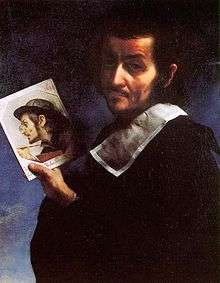
Carlo Dolci born 25 May

Ferdinand Bol born 24 June

John Wallis born 23 November
January–March
- January 1 – Nabeshima Naozumi, Daimyo (d. 1669)
- January 5 – Alexander von Bournonville, Flemish noble and general (d. 1690)
- January 13 – Antoinette Bourignon, French-Flemish mystic and adventurer (d. 1680)
- January 16 – François de Vendôme, Duke of Beaufort, French soldier (d. 1669)
- January 20 – Jerzy Sebastian Lubomirski, Polish noble (szlachcic) (d. 1667)
- January 23 – Ralph Josselin, English clergyman (d. 1683)
- January 27 – Christen Aagaard, Danish poet (d. 1664)
- January 30 – William Sancroft, Archbishop of Canterbury (d. 1693)
- February 1 – Sophie Elisabeth of Brandenburg, Duchess consort of Saxe-Altenburg (d. 1650)
- February 2 – Sébastien Bourdon, French painter and engraver (d. 1671)
- February 14 – Marc Restout, French painter (d. 1684)
- February 25 – Isaack Luttichuys, Dutch Golden Age (d. 1673)
- February 27 – István Esterházy, member of the wealthy Hungarian Esterházy family (d. 1641)
- February 28
- Kaspar Förster, German singer and composer (d. 1673)
- Frederick of Hesse-Darmstadt, Catholic cardinal (d. 1682)
- March 1 – Maurizio Cazzati, Italian composer (d. 1678)
- March 9 – Robert Giguère, early pioneer in New France (d. 1709)
- March 13 – Joseph Beaumont, British academic and poet (d. 1699)
- March 16 – Thomas Jervoise, English politician (d. 1693)
- March 24 – John Birkenhead, British political writer and journalist (d. 1679)
- March 29 – Johann Erasmus Kindermann, German composer and organist (d. 1655)
April–June
- April 1 – Christian Günther II, Count of Schwarzburg-Sondershausen-Arnstadt (1642–1666) (d. 1666)
- April 2 – Herbert Morley, English politician (d. 1667)
- April 5 – Frederick, Count Palatine of Zweibrücken (d. 1661)
- April 7 – Thomas Hopkins, Early Providence settler (d. 1684)
- April 19 – Louis IV of Legnica, Duke of Oława and Brzeg (1633–1654) (d. 1663)
- April 24 – Gustav, Count of Vasaborg, illegitimate son of King Gustavus Adolphus and his mistress Margareta Slots (d. 1653)
- April 27 – Jeremias Felbinger, German Socinian writer (d. 1690)
- May 1 – Frederick III, Margrave of Brandenburg-Ansbach (1625–1634) (d. 1634)
- May 16 – Archibald Primrose, Lord Carrington, Scottish judge (d. 1679)
- May 19 – Johann Jakob Froberger, German composer and keyboardist (d. 1667)
- May 23 – Sir Edward Bagot, 2nd Baronet, English politician (d. 1673)
- May 24 – John Maitland, 1st Duke of Lauderdale (d. 1682)
- May 25 – Carlo Dolci, Italian painter (d. 1686)
- May 27 – Christina Magdalena of the Palatinate-Zweibrücken, Swedish Princess by birth; margravine of Baden-Durlach by marriage (d. 1662)
- June – John Thurloe, spymaster for Oliver Cromwell (d. 1668)
- June 3 – George Courthope, English politician (d. 1685)
- June 23 – Shah Shuja, second son of Shah Jahan and Mumtaz Mahal (d. 1661)
- June 24
- Ferdinand Bol, Dutch artist (d. 1680)
- Philipp, Prince of Hohenzollern-Hechingen (1661–1671) (d. 1671)
- June 25 – James Livingstone, 1st Viscount Kilsyth, Scottish Viscount (d. 1661)
- June 28 – Lucas Franchoys the Younger, painter (d. 1681)
July–September
- July 7 – John Leverett, Governor of Massachusetts Bay Colony (d. 1679)
- July 10 – Antonio del Castillo y Saavedra, Spanish artist (d. 1668)
- July 21 – Anna de' Medici, Archduchess of Austria (d. 1676)
- August – William Russell, 1st Duke of Bedford, British peer and soldier (d. 1700)
- August 6 – John Higginson, English minister (d. 1708)
- August 12 – Johann Paul Freiherr von Hocher, Austrian chancellor (d. 1683)
- August 18 – John Hervey, English courtier and politician (d. 1680)
- August 30 – Giovan Battista Nani, Italian historian and diplomat (d. 1678)
- September 9 – Nicolás de Villacis, Spanish painter (d. 1694)
- September 25 – Alexander Morus, Franco-Scottish Calvinist preacher (d. 1670)
October–December
- October 4 – Philippe Balthazar de Gand, French noble (d. 1680)
- October 11 – Andreas Gryphius, German lyric poet and dramatist (d. 1664)
- October 15 – Hoshina Masakage, Japanese daimyo of the Edo period (d. 1700)
- October 18 – Nicholas Culpeper, English botanist (d. 1654)
- October 20 – Thomas Bartholin, Danish physician, mathematician, and theologian (d. 1680)
- October 21 – Camillo Astalli, Italian cardinal (d. 1663)
- November 13 – Nicholas Dennys, English politician (d. 1692)
- November 23 – John Wallis, English mathematician (d. 1703)
- December 12 – Martin Lluelyn (d. 1682)
- December 13 – Edward Chamberlayne, English writer (d. 1703)
- December 14 – William Hamilton, 2nd Duke of Hamilton, Scottish nobleman (d. 1651)
- December 17 – Roger L'Estrange, English pamphleteer and author (d. 1704)
- December 25 – Christian Hoffmann von Hoffmannswaldau, German poet (d. 1679)
- date unknown
- Charles Albanel, French missionary (d. 1696)
- Henry Bard, 1st Viscount Bellomont, English Royalist (d. 1656)
- Jan Kazimierz Chodkiewicz, Polish nobleman (szlachcic) (d. 1660)
- Birgitta Durell, Swedish industrialist (d. 1683)
- William Holder, English music theorist (d. 1698)
- Kamalakara, Indian astronomer/mathematician (d. 1700)
- Johann Klaj, German poet (d. 1656)
- Sokuhi Nyoitsu, Buddhist monk (d. 1671)
- John Owen, Nonconformist theologian (d. 1683)
- Edward Sexby, English Puritan soldier/Leveller (d. 1658)
- Obadiah Walker, Master of University College, Oxford (d. 1699)
- probable
- Caesar van Everdingen, older brother of Allart van Everdingen (d. 1678)
- Louise de La Fayette, French courtier and royal favorite (d. 1665)
- Matthias Weckmann, German musician/composer (d. 1674)
- Trijntje Keever, presumed to have been the tallest woman ever (d. 1633)
Deaths
January–March
- January 5 – Simeon Bekbulatovich, khan of the Qasim Tatars, Grand Duke of Muscovy and Tver
- January 6 – Philip Henslowe, English theatre manager (b. 1550)
- January 18 – Charles de Ligne, 2nd Prince of Arenberg, Dutch noble (b. 1550)
- February 12 – Anna of Nassau-Dillenburg, Countess consort of Nassau-Weilburg (b. 1541)
- February 13 – Anders Sørensen Vedel, priest and historian (b. 1542)
- February 15 – George Carey, English politician (b. 1541)
- February 18 – Archduke Maximilian Ernest of Austria, Austrian archduke (b. 1583)
- February 28
- Mikołaj Krzysztof "the Orphan" Radziwiłł, Polish-Lithuanian noble (szlachcic) (b. 1549)
- Vincent Skinner, Member of Parliament (b. 1543)
- March 3 – Matthias de l'Obel, physician of James I (b. 1538)
- March 6 – Francis Beaumont, dramatist in the English Renaissance theatre (b. 1584)
- March 8
- Maria Anna of Bavaria, daughter of William V, Duke of Bavaria and Renata von Lothringen (b. 1574)
- Giulio Cesare Casseri, Italian anatomist (b. 1552)
- March 21 – Giacomo Castelvetro, Italian writer (b. 1546)
- March 27 – George Wild, lawyer and politician (b. 1550)
- March 31 – John Adolf, Duke of Holstein-Gottorp (b. 1575)
April–June
- April 16 – Juan de Silva, Spanish military commander and governor of the Philippines
- April 23
- (N.S., Saturday) – Miguel de Cervantes, Spanish author (b. 1547)
- (O.S., Tuesday) – William Shakespeare, English playwright and poet (b. 1564)
- (Inca date unknown) Inca Garcilaso de la Vega, Peruvian author (b. 1539)
- April 27 – Francesco Barbaro, Italian diplomat (b. 1546)
- May 4 – Magdalene of Brandenburg, Landgravine consort of Hesse-Darmstadt (1598–1616) (b. 1582)
- May 24 – Margaret Clifford, Countess of Cumberland, British noble (b. 1560)
- May 30 – Thomas Parry, English politician (b. 1541)
- June 1 – Tokugawa Ieyasu, Japanese shogun (b. 1543)
- June 4 – Adam Hieronim Sieniawski, Polish–Lithuanian noble (b. c. 1576)
- June 9 – Cornelis Schuyt, Dutch organist and composer (b. 1557)
- June 12 – Kuzma Minin, merchant from Nizhny Novgorod
- June 18 – Thomas Bilson, English bishop (b. 1547)
July–September
- July 7
- Charles Philippe de Rodoan, third bishop of Middelburg and the fourth bishop of Bruges (b. 1552)
- Anna of Württemberg, German princess (b. 1561)
- July 20
- Honda Masanobu, commander and daimyo (b. 1538)
- Hugh O'Neill, 2nd Earl of Tyrone, Irish soldier (b. 1540)
- July 25 – Andreas Libavius, German physician and chemist (b. 1555)
- July 29 – Tang Xianzu, Chinese playwright and poet (b. 1550)
- July 31 – Roger Wilbraham, Solicitor-General for Ireland (b. 1553)
- August 3 – Hans Meinhard von Schönberg, Military commander (b. 1582)
- August 7
- Scipione Gentili, law professor and legal writer (b. 1563)
- Vincenzo Scamozzi, Italian architect (b. 1548)
- August 8
- Cornelis Ketel, Dutch painter (b. 1548)
- Henry Lennard, 12th Baron Dacre, English baron and politician (b. 1570)
- August 31 – Henry Poole, English politician (b. 1541)
- September 24
- Henry Baynton, English Member of Parliament (b. 1571)
- John Scott, English politician (b. 1570)
- September 29 – Henry Clinton, 2nd Earl of Lincoln, English politician (b. 1539)
October–December
- October 11 – Aleksander Józef Lisowski, Polish noble (szlachcic) (b. 1580)
- October 17 – John Pitts, Catholic scholar and writer (b. 1560)
- October 21 – Sakazaki Naomori, daimyo
- October 23 – Leonhard Hutter, German theologian (b. 1563)
- October 27 – Johannes Praetorius, German astronomer and mathematician (b. 1537)
- November 3 – Agnes Hedwig of Anhalt, Abbess of Gernrode, Electress of Saxony, Duchess of Schleswig-Holstein-Sønderborg-Plön (b. 1573)
- November 23 – Richard Hakluyt, English author, editor and translator (b. c. 1552)
- December 7 – Guillaume Fouquet de la Varenne, French chef (b. 1560)
- December 22 – Jacob Le Maire, Dutch mariner (b. 1585)
- December 24 – György Thurzó, Palatine of Hungary (b. 1567)
- December 31 – Jan Szczęsny Herburt, Polish political writer (b. 1567)
- date unknown
- Matteo Perez d'Aleccio, Italian painter (b. 1547)
- Shimozuma Chuko, monk of the Hongan-ji (b. 1551)
- Yonten Gyatso, 4th Dalai Lama (b. 1589)
- Meir Lublin, Polish rabbi (b. 1558)
- Henry Robinson, English bishop (b. 1553)
- probable
- Hendrick Christiaensen, Dutch explorer
- Krzysztof Klabon, Polish Renaissance composer (b. 1550)
- Alexander Whitaker, Virginia Colony religious leader (b. 1585)
References
- ↑ Jehângïr's period of stay at Ajmer was from 5 Shawwäl 1022 to 1 Zil-qä'da 1025 equivalent to November 8, 1613, to October 31, 1616.
- ↑ Strachan, Michael (2004). "Roe, Sir Thomas (1581–1644)". Oxford Dictionary of National Biography. Oxford University Press. doi:10.1093/ref:odnb/23943. Retrieved 2012-10-09. (subscription or UK public library membership required)
- ↑ "East Indies: February 1616". Calendar of State Papers Colonial, East Indies, China and Japan: 1513-1616. 2. 1864. pp. 457–461. Retrieved 2008-03-01.
- ↑ Donaldson, Ian (2004). "Jonson, Benjamin (1572–1637)". Oxford Dictionary of National Biography. Oxford University Press. doi:10.1093/ref:odnb/15116. Retrieved 2012-10-09.
- 1 2 Event dated with reference to historical documents. "Global Volcanism Program". Smithsonian Institution. Retrieved 2008-03-12.
- ↑ Penguin Pocket On This Day. Penguin Reference Library. 2006. ISBN 0-14-102715-0.
- 1 2 Everett, Jason M., ed. (2006). "1616". The People's Chronology. Thomson Gale.
- ↑ "Robert Bylot". ExploreNorth. Retrieved 2013-08-13.
- ↑ Bellany, Alastair (2004). "Carr, Robert, earl of Somerset (1585/6?–1645)". Oxford Dictionary of National Biography. Oxford University Press. doi:10.1093/ref:odnb/4754. Retrieved 2012-10-09.
- 1 2 Palmer, Alan; Veronica (1992). The Chronology of British History. London: Century Ltd. pp. 170–172. ISBN 0-7126-5616-2.
- ↑ Arano, Yasunori (2005). "The Formation of a Japanocentric World Order". International Journal of Asian Studies. 2 (2): 201. doi:10.1017/s1479591405000094.
- ↑ Kellett, Arnold (2003). King James's School, 1616-2003. Knaresborough: King James's School. ISBN 0-9545195-0-7.
- ↑ Published 1631.
- ↑ Bland, M. (1998). "William Stansby and the production of the Workes of Beniamin Jonson, 1615–16". The Library. Bibliographical Society. 20: 10. doi:10.1093/library/20.1.1.
- ↑ "A Basic European Earthquake Catalogue and a Database for the evaluation of long-term seismicity and seismic hazard (BEECD)" (PDF). Retrieved 2008-03-05.
- ↑ Visram, Rozina (2002). Asians in Britain: 400 Years of History. London: Pluto Press. ISBN 0-7453-1373-6.
- ↑ Ratnikas, Algirdas J. "Timeline Indonesia". Timelines.ws. Archived from the original on July 10, 2010. Retrieved 2010-08-12.
- ↑ Milton, Giles (1999). Nathaniel's Nutmeg: Or the True and Incredible Adventures of the Spice Trader Who Changed the Course of History. New York: Farrar, Straus and Giroux. ISBN 978-0-374-21936-9.
- ↑ "Mirror of the Cruel and Horrible Spanish Tyranny Perpetrated in the Netherlands, by the Tyrant, the Duke of Alba, and Other Commanders of King Philip II". World Digital Library. 1620. Retrieved 2013-08-25.
- ↑ From an etching in the Guerre de Beauté, a series of six etchings depicting a celebration which took place in Florence in the year 1616 in honor of the prince of Urbino.
- ↑ Bratton, Timothy (1988). "Identity of the New England Indian Epidemic of 1616-1619". Bulletin of the History of Medicine. 62 (3): 352–383.
- ↑ Dobyns, Henry F. (1993). "Disease Transfer at Contact". Annual Review of Anthropology. 22: 273–291. doi:10.1146/annurev.anthro.22.1.273.
- ↑ Spinage, Clive A. (2003). Cattle plague: a history. New York: Springer. ISBN 0-306-47789-0.
- ↑ Bernhard, Virginia (1999). Slaves and Slaveholders in Bermuda, 1616-1782. Columbia: University of Missouri Press.
- ↑ Mintz, Sidney W. (1986). Sweetness and Power: The Place of Sugar in Modern History. New York: Penguin. ISBN 0140092331.
- ↑ Robbins, Russell Hope (1959). The Encyclopedia of Witchcraft and Demonology. New York: Bonanza Books.
- ↑ Logan, Terence P.; Smith, Denzell S., eds. (1975). The Popular School: A Survey and Bibliography of Recent Studies in English Renaissance Drama. Lincoln: University of Nebraska Press. p. 69.
- ↑ Sluiter, Engel (1949). "The Fortification of Acapulco, 1615-1616". The Hispanic American Historical Review. 29 (1): 69–80. doi:10.2307/2508294. Today the fort houses the Acapulco Historical Museum.
- ↑ His notebooks, not fully published until the 20th century, reveal a coherent mechanical philosophy of nature with incipient atomism, a force of inertia, and mathematical interpretations of natural philosophy are present. van Berkel, K. (1983). Isaac Beeckman (1588–1637) en de mechanisering van het wereldbeeld. Amsterdam.
- ↑ Searles, Colbert (1925). "Allusions to the Contemporary Theater of 1616 by Francois Rosset". Modern Language Notes. 40 (8): 481–483.
- Clifford, Anne (2006). Acheson, Katherine O, ed. The Memoir of 1603 and The Diary of 1616-19. New York: Broadview Press. ISBN 1-55111-339-2.
- Christensen, Thomas (Spring 2012). 1616: The World in Motion. Counterpoint Press. Author's website.
This article is issued from Wikipedia - version of the 11/20/2016. The text is available under the Creative Commons Attribution/Share Alike but additional terms may apply for the media files.
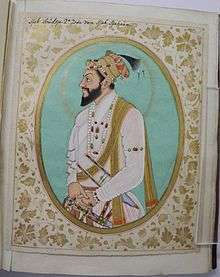
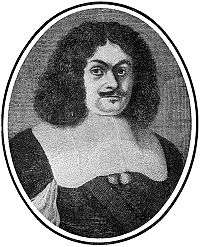
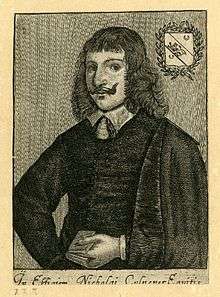
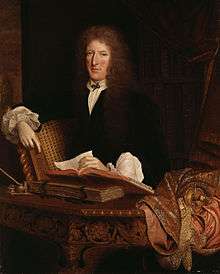
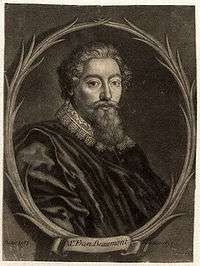
.jpg)

